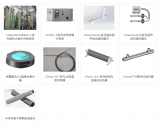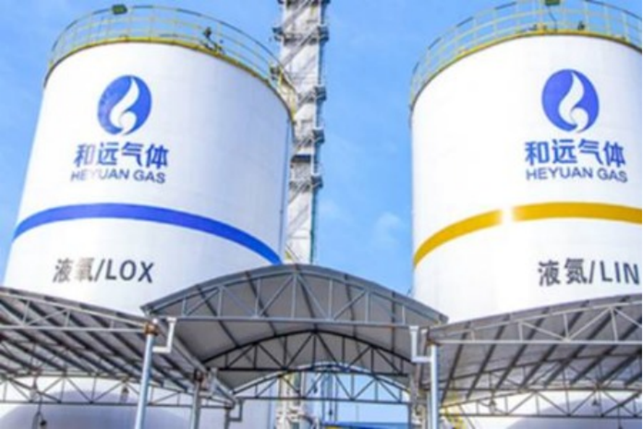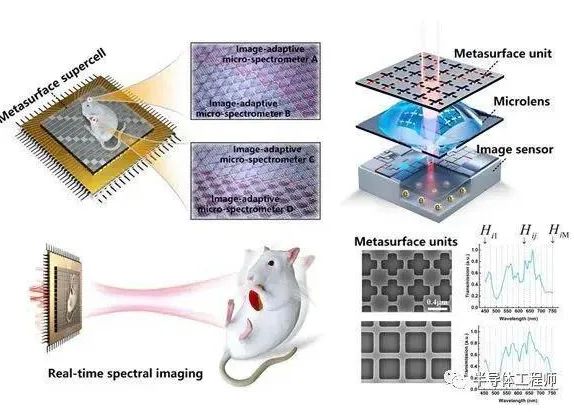@Weaasel bro I know I get a lot of criticism for being an overenthusiastic, BUT to answer your question it only mean that next year we might see a 7nm domestic line.That is the same question that I ask. A major breakthrough if true and if it functions well.
You are using an out of date browser. It may not display this or other websites correctly.
You should upgrade or use an alternative browser.
You should upgrade or use an alternative browser.
Chinese semiconductor industry
- Thread starter Hendrik_2000
- Start date
- Status
- Not open for further replies.
That is the same question that I ask myself...
Thanks for the clarification.Summer Snow incorrectly inferred the news.
The news is that Qi'er had shipped the "immersion system" (the more accurate name would be "immersion hood"). This is the subsystem that would "immerse" the lens in water to increase the effective N,A. of the projection onto the wafer. An "immersion system" per the description or context of the news is not the same as an immersion lithography system.
This mix-up had already happened a few years ago where everyone confused the subsystem as the actual scanner itself.
It would be extremely weird for them to begin mass production of subsystems for of the lithography machine if mass production of the machine itself hasn't started. But who knows, maybe Qi'er is just content blowing money down the drain with products that no customers need.
That's China Derangement Syndrome logic, man. Any interpretation except the most obvious one.It would be extremely weird for them to begin mass production of subsystems for of the lithography machine if mass production of the machine itself hasn't started. But who knows, maybe Qi'er is just content blowing money down the drain with products that no customers need.
Nikon has immersion lithography machines capable of 7nm.Remember that Japan is capable of producing to high quality all equipment used in IC chip manufacturing except EUV lithography machines. Gigaphoton is a Japanese company that is capable of producing the power light source to vapourize tin droplets used in ASLM's EUV lithography machines, even though it is not the supplier of that light source. It is very plausible that if Japan committed itself politically it could acquire ASML's machines to produce 7 nm and below IC chips, establishing a company or bestowing one or more existing companies for that purpose. Additionally, Canon does possess nanoimprint lithography technology that can produce at nodes of less than 20 nm.
Japan only does not have EUV lithography machines. But like you said they have an EUV light source. And they also can make their own EUV masks.
It would be extremely weird for them to begin mass production of subsystems for of the lithography machine if mass production of the machine itself hasn't started. But who knows, maybe Qi'er is just content blowing money down the drain with products that no customers need.
This is just development of a sub-system that overlaps their main business: Ultrapure Water and temperature control.
Water, the commodity that the semiconductor industry use the most. Ultrapure water that is used in mixing, polishing, cleaning and cooling, there is pretty good business in that area.


superdog
Junior Member
Haha, some Chinese company name translations are indeed cringy. However Cheertech sounds fine to me, at least it's not "Cheese" or "Cheap". Many foreigners won't be able to pronounce Qi'er correctly, would be a headache if you're the marketing guy.Indeed, I have great appreciation for the state owned companies with straightforward names (CETC, Wuhan Steel, etc) and larger public companies that just outright use pinyin names like Baidu, Huawei, Haier, Xiaomi, Datang, etc.
Seriously wtf is up with these names? is Qi'er so bad??
I did dunk on GermanLitho before though. They deserve the dunking more than anyone. Seriously, GermanLitho, wtf.
For Germanlitho there's actually an interesting background to it. The founder, Ji Ran, founded Nanoji and Germanlitho GmbH in Germany shortly before establishing 天仁微纳 in China. He's a high level expert in , and developed his status and connections mostly during his academic and industrial careers in Germany (he was the lead technologist for Nanoimprint at SUSS Microtec, a major industry supplier in Germany). The "German part" of his own company still seems to be operating today, would it be a front for tech cooperation, transfer, brain drain, or just marketing? Your guess is as good as mine.
Last edited:
Heyuan Gas: Trichlorosilane project is expected to be put into operation in the first half of 2023

Jiwei Net News (Text / Lin Xueying) On June 17, Heyuan Gas pointed out in the latest investor relations activity record disclosed that according to the current project progress, the specific time for the production of trichlorosilane is expected to be in the first half of 2023.
In addition, Heyuan Gas stated that the company's significance of the Yichang Electronic Special Gas and Functional Materials Industrial Park project has been disclosed. The planned silicon material is a combination of the park's resource advantages, the company's technological advantages, and the development trend of national new materials, new energy, and semiconductor industries. Planned after long-term research. Some of the trichlorosilanes will be sold directly according to market demand, and some will be used to produce functional silane materials.
It is understood that the main profitable sectors of Heyuan Gas are the original bottled gas, liquid gas, various tail gas recycling businesses and the newly built liquid ammonia project of Qianjiang Electronic Special Gas Industrial Park.
In response to the national epidemic this year, Heyuan Gas said that this year's epidemic mainly has a greater impact on the overall economic environment, and has a certain impact on the company's customer needs and energy logistics costs.
In terms of the photovoltaic industry chain, Heyuan Gas mainly provides oxygen, nitrogen, argon, hydrogen and other industrial gases required by customers in the photovoltaic industry chain, and also provides argon tail gas recovery and recycling for individual enterprises.
It is reported that Heyuan Gas maintains a long-term stable supply relationship with a large number of representative enterprises in downstream industries, covering a wide range of industries, including but not limited to steel, chemical, photovoltaic, optical fiber and cable, food, energy, medical, electronics, lighting, home appliances, steel, Machinery, agriculture and other industries, including Taiwan-based Semiconductor, Sanan Optoelectronics, AutoNavi Infrared, Qihong Optoelectronics, Tinci Materials, Philippine, Sinopec, China Construction Steel Structure, China Shipbuilding, Dongfeng Motor, Fangda Special Steel , Gree Electric, Midea Electric, Haier Electric, TCL, CSG Silicon Materials, Xingfa Group, Sanning Chemical, Spark Chemical, JinkoSolar, Wuhan Children's Hospital, Yichang Central Hospital, Jingzhou First People's Hospital, PepsiCo, Uni-President, Red Bull, Yili, Jiaduobao, Mengniu, Huiyuan, Yinlu, etc. have formed a good brand effect.
trichlorosilane is used in the epitaxial deposition of pure polysilicon.

The team of Professor Huang Yidong of Tsinghua University developed the world's first real-time hyperspectral imaging chip
Posted by: ZSjie2130
Reads: 25
Time: 2022-06-14 22:42
Recently, Associate Professor Cui Kaiyu from the team of Professor Huang Yidong from the Department of Electronic Engineering of Tsinghua University led the students to make important progress in the research of hyperspectral imaging chips, and developed the world's first real-time hyperspectral imaging chip. The leap to hyperspectral imaging chips. The Science review paper "Miniaturization of Optical Spectrometers" lists this hyperspectral imaging chip technology as the latest research achievement in the field.

The world's first real-time hyperspectral imaging chip developed by this achievement realizes the spectral domain modulation of incident light through a silicon-based metasurface, uses a CMOS image sensor to complete the projection measurement from the spectral domain to the electrical domain, and then uses a compressed sensing algorithm for spectral reconstruction. And further realize real-time spectral imaging through large-scale array integration of metasurfaces. This real-time hyperspectral imaging chip reduces the size of the single-point spectrometer to less than 100 microns, and the spatial resolution exceeds 150,000 spectral pixels, that is, 150,000 miniature spectrometers are integrated on a 0.5 cm2 chip, which can quickly obtain the information of each pixel point. spectrum, the working spectrum width is 450~750 nm, and the resolution is as high as 0.8 nm.
The research team cooperated with the team of Professor Hong Bo of the Department of Biomedical Engineering of Tsinghua University, and based on the real-time hyperspectral imaging chip, the dynamic changes of the characteristic spectrum of hemoglobin and its derivatives in the brain of living rats were measured for the first time with a temporal resolution of up to 30 Hz. Through real-time spectral imaging, the dynamic spectral changes of different positions in the rat brain can be obtained, combined with the characteristic absorption peaks of hemoglobin, the changes of hemoglobin content in the corresponding vascular and non-vascular areas can be analyzed and obtained, and the mechanism of neural blood oxygen coupling can be used. Get the active state of neurons in the brain.
The team further proposed a metasurface design method for Freeform shaped meta-atoms, which broke through the design limitations of regular shapes and developed a metasurface spectroscopic imaging chip based on freeform shaped meta-atoms. Excellent spectral imaging performance. The results of the measurement and reconstruction of the broad-spectrum light and the narrow-spectrum light show that the standard deviation of the center wavelength deviation of the reconstruction of the narrow-spectrum light is only 0.024 nm. The average spectral reconstruction fidelity of the 24-color standard color chart reaches 98.78%. This research work further improves the performance of metasurface spectroscopic imaging chips, and promotes the development of future spectral imaging chips and their applications in real-time sensing.
The real-time hyperspectral imaging chip of this achievement is a deep cross-integration of micro-nano optoelectronics and spectroscopy technology. As a subversive progress in spectroscopy technology, it shows great application potential in the field of real-time sensing, and related achievements have been industrialized.
The above research results were published in Optica under the title "Dynamic brain spectrum acquired by a real-time ultraspectral imaging chip with reconfigurable metasurfaces". . Xiong Jian, a 2017 doctoral student in the Department of Electronics, Cai Xusheng, a postdoctoral fellow, and Cui Kaiyu, an associate professor, are the co-first authors of the paper. Cui Kaiyu is the corresponding author of the paper. This work was supported by the Key R&D Program of the Ministry of Science and Technology, the National Natural Science Foundation of China, the Beijing Science and Technology Program, the Beijing Natural Science Foundation, the Beijing Frontier Science Center for Quantum Information, and the Beijing Institute of Quantum Information Science.
At the same time, the research results were also published in the journal Laser & Photonics Reviews under the title "Ultraspectral Imaging Based on Metasurfaces with Freeform Shaped Meta-Atoms". . Yang Jiawei, a 2018 doctoral student in the Department of Electronics, is the first author of this work. Associate Professor Cui Kaiyu and Professor Huang Yidong are the corresponding authors of the paper. This work was supported by the Key R&D Program of the Ministry of Science and Technology, the National Natural Science Foundation of China, the Beijing Science and Technology Program, the Beijing Natural Science Foundation, the Beijing Frontier Science Center for Quantum Information, and the Beijing Institute of Quantum Information Science.
Reads: 25
Time: 2022-06-14 22:42
Recently, Associate Professor Cui Kaiyu from the team of Professor Huang Yidong from the Department of Electronic Engineering of Tsinghua University led the students to make important progress in the research of hyperspectral imaging chips, and developed the world's first real-time hyperspectral imaging chip. The leap to hyperspectral imaging chips. The Science review paper "Miniaturization of Optical Spectrometers" lists this hyperspectral imaging chip technology as the latest research achievement in the field.

The world's first real-time hyperspectral imaging chip developed by this achievement realizes the spectral domain modulation of incident light through a silicon-based metasurface, uses a CMOS image sensor to complete the projection measurement from the spectral domain to the electrical domain, and then uses a compressed sensing algorithm for spectral reconstruction. And further realize real-time spectral imaging through large-scale array integration of metasurfaces. This real-time hyperspectral imaging chip reduces the size of the single-point spectrometer to less than 100 microns, and the spatial resolution exceeds 150,000 spectral pixels, that is, 150,000 miniature spectrometers are integrated on a 0.5 cm2 chip, which can quickly obtain the information of each pixel point. spectrum, the working spectrum width is 450~750 nm, and the resolution is as high as 0.8 nm.
The research team cooperated with the team of Professor Hong Bo of the Department of Biomedical Engineering of Tsinghua University, and based on the real-time hyperspectral imaging chip, the dynamic changes of the characteristic spectrum of hemoglobin and its derivatives in the brain of living rats were measured for the first time with a temporal resolution of up to 30 Hz. Through real-time spectral imaging, the dynamic spectral changes of different positions in the rat brain can be obtained, combined with the characteristic absorption peaks of hemoglobin, the changes of hemoglobin content in the corresponding vascular and non-vascular areas can be analyzed and obtained, and the mechanism of neural blood oxygen coupling can be used. Get the active state of neurons in the brain.
The team further proposed a metasurface design method for Freeform shaped meta-atoms, which broke through the design limitations of regular shapes and developed a metasurface spectroscopic imaging chip based on freeform shaped meta-atoms. Excellent spectral imaging performance. The results of the measurement and reconstruction of the broad-spectrum light and the narrow-spectrum light show that the standard deviation of the center wavelength deviation of the reconstruction of the narrow-spectrum light is only 0.024 nm. The average spectral reconstruction fidelity of the 24-color standard color chart reaches 98.78%. This research work further improves the performance of metasurface spectroscopic imaging chips, and promotes the development of future spectral imaging chips and their applications in real-time sensing.
The real-time hyperspectral imaging chip of this achievement is a deep cross-integration of micro-nano optoelectronics and spectroscopy technology. As a subversive progress in spectroscopy technology, it shows great application potential in the field of real-time sensing, and related achievements have been industrialized.
The above research results were published in Optica under the title "Dynamic brain spectrum acquired by a real-time ultraspectral imaging chip with reconfigurable metasurfaces". . Xiong Jian, a 2017 doctoral student in the Department of Electronics, Cai Xusheng, a postdoctoral fellow, and Cui Kaiyu, an associate professor, are the co-first authors of the paper. Cui Kaiyu is the corresponding author of the paper. This work was supported by the Key R&D Program of the Ministry of Science and Technology, the National Natural Science Foundation of China, the Beijing Science and Technology Program, the Beijing Natural Science Foundation, the Beijing Frontier Science Center for Quantum Information, and the Beijing Institute of Quantum Information Science.
At the same time, the research results were also published in the journal Laser & Photonics Reviews under the title "Ultraspectral Imaging Based on Metasurfaces with Freeform Shaped Meta-Atoms". . Yang Jiawei, a 2018 doctoral student in the Department of Electronics, is the first author of this work. Associate Professor Cui Kaiyu and Professor Huang Yidong are the corresponding authors of the paper. This work was supported by the Key R&D Program of the Ministry of Science and Technology, the National Natural Science Foundation of China, the Beijing Science and Technology Program, the Beijing Natural Science Foundation, the Beijing Frontier Science Center for Quantum Information, and the Beijing Institute of Quantum Information Science.
This Chinese Innovation is enough to drive Ron Vara mad.
All New Huawei Mobile Phones will now all come with 5G connectivity thanks to a new 5G Communication Smartphone Case.
US Govt efforts to disrupt Huawei's Mobile Phone Business failed.
All New Huawei Mobile Phones will now all come with 5G connectivity thanks to a new 5G Communication Smartphone Case.
US Govt efforts to disrupt Huawei's Mobile Phone Business failed.
- Status
- Not open for further replies.
